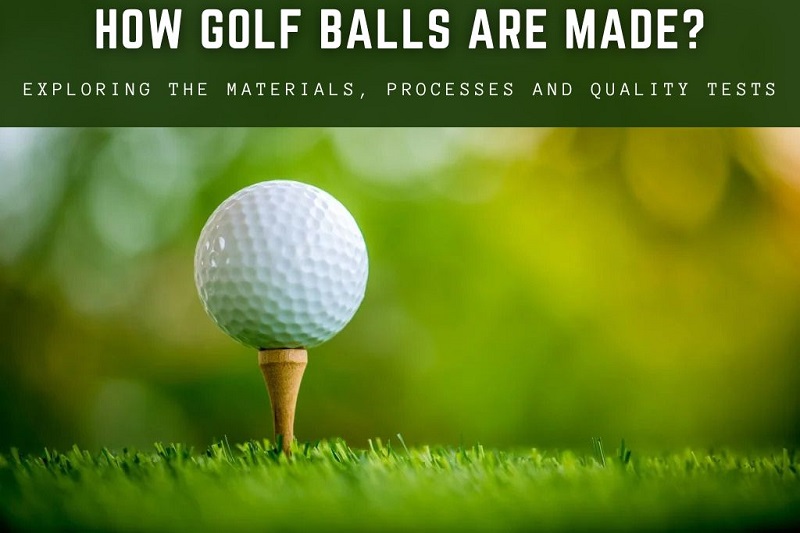Golf balls are one of the essential pieces of equipment for any golfer. But do you know how golf balls are made? How does a manufacturer turn raw materials into something that can stand up to the rigors of professional play?
From the materials used to create them to the processes and quality tests they must pass before being sold, this article will explore everything there is to know about how golf balls are made from start to finish. We’ll look at their unique construction features and design elements, making them popular among players across all levels. So let’s get started!
You can learn all about the size of golf balls here: Golf Ball Size: Diameter, Weight, Dimples, Circumference
The History Of Golf Balls
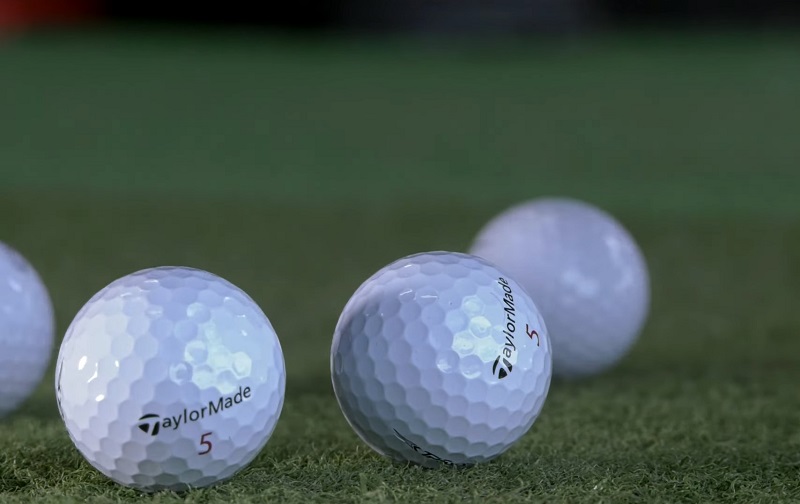
Golf balls have come a long way since their humble beginnings in the 14th century. Originally made of wood and filled with feathers, these “feathers” were labor-intensive to make and not very durable. But in the mid-1800s, a new type of ball made of gutta-percha, a rubber-like material, was introduced, providing more durability and ease of production.
The next major innovation came in the early 1900s with the Haskell ball, the first modern golf ball. This ball featured a solid rubber core wrapped in rubber thread and covered in gutta-percha, providing even more durability and control.
Today’s golf balls are made of synthetic materials like Surlyn and urethane and specialized feature designs to enhance performance, such as dimples that reduce air resistance and increase distance. From feathers to high-tech, modern balls, the evolution of the golf ball has been a fascinating journey.
What Are The Different Types Of Golf Balls?
The modern golf ball comes in various types, each designed for a specific purpose.
- Two-Piece Golf Balls: These are usually cheaper and better for beginner golfers because they provide more distance off the tee but don’t have as much spin around the green.
- Three-Piece Golf Balls: With a larger core, softer cover and multi-layer construction, these balls offer more spin and control around the green.
- Four-Piece Golf Balls: With a large core, multiple layers and a soft cover, these balls provide maximum spin and feel off the clubface for better accuracy and control.
- Five-Piece Golf Balls: The most advanced golf balls with five layers of construction for maximum spin, distance and control.
What Are the Materials Used In The Golf Balls Manufacturing Process?
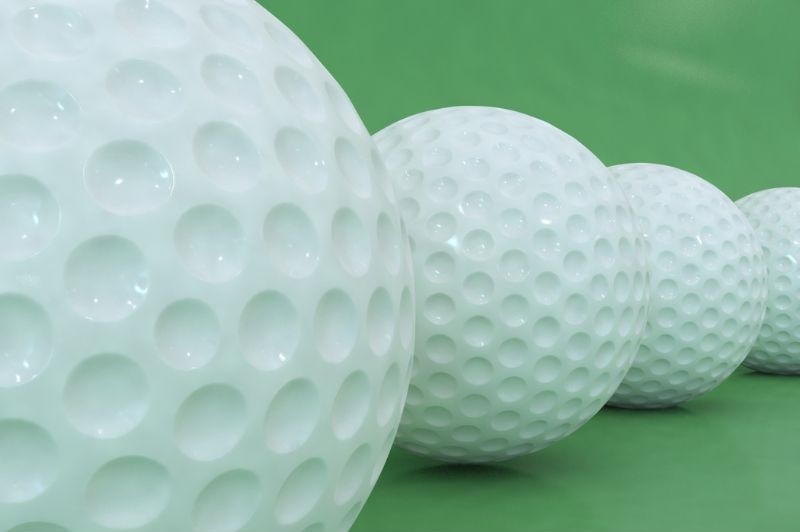
Golfers all know that the equipment they use can make a significant difference in their game. But did you know that the materials used in the manufacturing of golf balls play a crucial role in determining their performance? From the core material to the cover material, every component is carefully selected and designed to provide golfers with the best possible experience on the course.
Over the years, manufacturers have worked tirelessly to improve golf ball performance by experimenting with different materials. Let’s take a closer look at some of the materials used in the golf ball manufacturing process:
The Core Material: The core is the central component of the golf ball, and it is usually made of synthetic rubber. Its primary purpose is to respond to the club’s impact and transfer energy to the ball. The core’s size, hardness, and compression determine the feel and performance of the ball. Smaller cores generally produce less spin, while larger cores generate more spin.
Cover Material: The golf ball’s cover is the outer layer that provides the ball with its characteristics such as spin, feel, and durability. There are two main types of cover materials: Surlyn and Urethane. Surlyn is a hard plastic that is durable and provides a firm feel. On the other hand, Urethane is softer and provides a softer feel and greater spin control.
Dimples: Have you ever wondered why golf balls have dimples? They play a crucial role in the ball’s aerodynamics by creating turbulence in the air around it, reducing drag, and allowing the ball to travel farther. The dimples’ number, size, and depth can significantly affect the ball’s flight and spin. Generally, more dimples mean more spin and better flight performance.
Paint: The paint on the surface of the golf ball provides it with its color and a smooth finish. But it’s not just for show. The paint also affects the ball’s aerodynamics, with lighter colors reducing drag and allowing for greater distance. However, darker colors may provide better visibility on a sunny day, so choosing the right color for the course conditions is essential.
Adhesives: Finally, adhesives are used to bond the layers of the golf ball together. They must be strong enough to provide a durable bond while allowing the layers to flex and compress upon impact. The correct adhesive can help ensure the golf ball maintains its shape and performance throughout its lifespan.
How Are Golf Balls Made – The Manufacturing Process
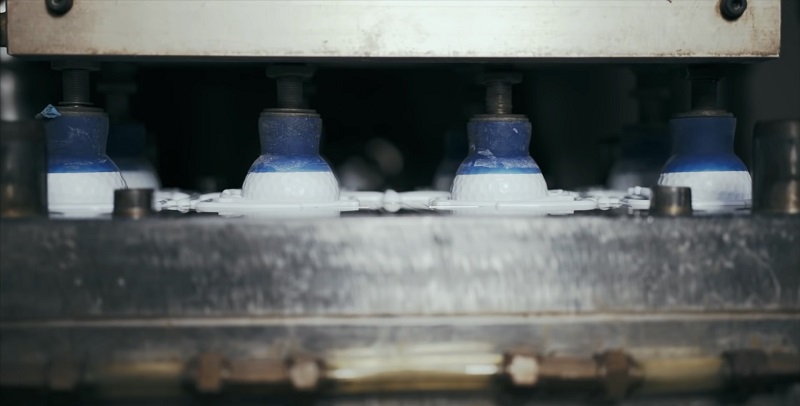
Golf balls are widely popular balls used for both recreational and professional play. How exactly do these balls get made? How are they designed to ensure maximum performance and durability? Let’s look at golf balls’ manufacturing process from start to finish.
Step 1: Forming the Core
The core of a golf ball is the most important component, as it determines the ball’s compression and the amount of spin it produces. Most modern golf balls have a solid rubber core, which is formed through a process called compression molding.
To create the core, a pre-measured amount of rubber compound is placed in a mold and heated under high pressure. The heat and pressure cause the rubber to melt and flow, taking on the shape of the mold. The mold is then cooled, and the newly-formed core is removed.
Step 2: Adding Layers
Once the core is formed, additional layers are added to the ball to provide it with its unique characteristics. The outer layer, or cover, is typically made of a material such as Surlyn or urethane. This layer is added by placing the core in a second mold and then injecting the molten cover material around it.
Golf balls can have anywhere from one to five layers, each with its own specific properties. For example, a two-piece ball has a solid core and a cover, while a three-piece ball has a core, an outer layer, and a mantle layer in between.
Step 3: Applying the Dimples
Dimples are an essential feature of modern golf balls. They reduce air resistance and help the ball fly farther and straighter. Dimples are formed by placing the ball in a machine that spins it at high speed while metal pins press against the surface, creating dimples.
Step 4: Quality Control
Once the ball is formed, it undergoes a series of quality control tests to ensure it meets the manufacturer’s standards. These tests can include measuring the ball’s weight, diameter, and compression and checking for any imperfections in the cover or dimples.
Step 5: Packaging and Distribution
Once the golf balls have passed quality control, they are packaged and shipped to retailers or directly to consumers. Golf balls are typically sold in packs of three, four, or a dozen.
While the manufacturing process for golf balls has evolved over the years, it still involves a series of precise steps to create a ball that is optimized for distance, accuracy, and spin. So the next time you’re playing a round of golf, take a moment to appreciate the technology behind the humble golf ball.
What Quality Tests Must Golf Balls Pass Before Selling?
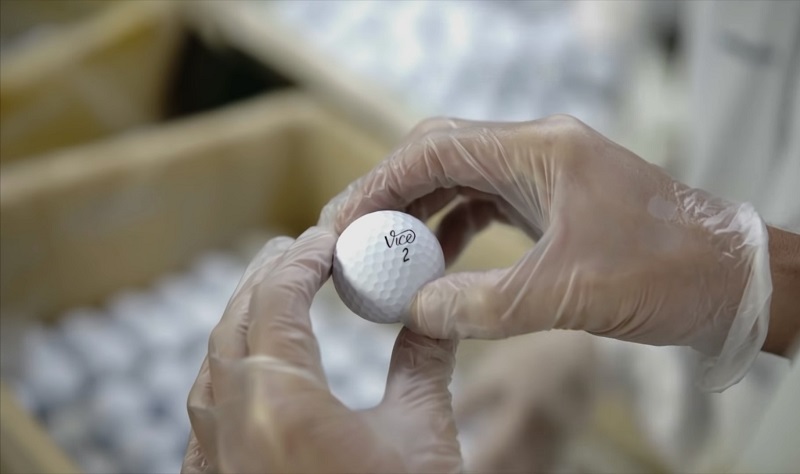
While golfers might not think too much about the quality of their golf balls, manufacturers go to great lengths to ensure that their products meet rigorous standards. In fact, golf balls must pass a series of quality tests before they can be sold to the public.
The weight test is one of the most important tests that golf balls must pass. The weight of a golf ball must be no more than 1.620 or (45.93 g). This test ensures that golf balls are consistent in weight, which is crucial for their flight and accuracy.
Another crucial quality test for golf balls is the size test. The diameter of a golf ball must not be less than 1.680 inches (42.67 mm). This ensures that golf balls are uniform in size and that they fit comfortably into the standard golf ball holes.
Golf balls must also pass a roundness test, measuring deviations from a perfect sphere. If a golf ball is even slightly distorted, it can affect how it travels through the air and make it more difficult to control.
Compression is another important quality test for golf balls. This test measures how much a golf ball compresses when it is struck with a club. Golf balls must have a certain level of compression to ensure that they provide the right amount of distance and control.
Velocity is also tested to ensure that golf balls meet specific speed requirements. A ball’s velocity is measured by hitting it with a club and measuring how fast it travels. Golf balls that are too slow or too fast are not allowed for competition.
Finally, golf balls must be aerodynamically sound. This is tested by measuring the ball’s trajectory and its response to wind. Golf balls with poor aerodynamics can be difficult to control, especially on windy days.
Overall, the quality tests that golf balls must pass are crucial to ensuring that they perform consistently and accurately. Golf ball manufacturers must adhere to strict standards set by organizations such as the United States Golf Association (USGA) and the Royal and Ancient Golf Club of St. Andrews (R&A) to ensure that their products are of the highest quality.
Unique Construction And Design Features Of Golf Balls
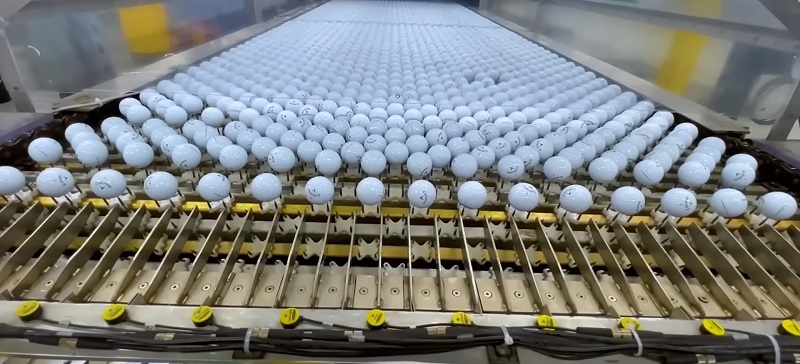
Golf balls are designed with various features that set them apart from other sports balls. Each layer has a specific purpose regarding performance, accuracy and distance from the inner core to the outer shell.
At the heart of every golf ball is its rubber core, typically made from rubber and synthetic rubber. The core is responsible for providing the ball with its initial velocity when hit off the tee. To help increase distance, some golf balls are made with a two-piece design with a softer inner layer surrounded by a firmer outer layer.
Surrounding the core is the mantle layer, which helps to reduce spin and offer increased control when hitting the ball. Depending on the manufacturer’s preference, the mantle layer may also be composed of rubber or synthetic materials.
The final component is the cover, which provides the ball with unique design features. It is made from various materials such as urethane elastomers, ionomer resins and thermoset plastics. The cover helps to reduce spin when hit off the tee while also providing added protection against wear and tear during play.
Why Is Golf Ball Design Important?
The design features of a golf ball, such as its dimples, layers, materials, size, weight, and overall construction, all impact how the ball travels through the air and reacts upon landing. A well-designed golf ball can result in greater distance, accuracy, and spin control, which can make a significant difference in a golfer’s overall score.
Additionally, golf ball design can also impact the feel and sound of the ball upon impact, which can affect a golfer’s confidence and comfort level while playing. As a result, manufacturers are constantly experimenting with new designs and materials to improve the performance of their golf balls, and golfers should pay attention to these design features to choose a ball that best fits their game.
Final Thoughts
Golf balls are complex and intricate products requiring great care and precision during their production. Manufacturers must ensure that each ball meets certain performance and durability standards before it can be sold. The materials used and the unique construction design features all play an important role in ensuring top-notch quality from every golf ball. You can improve your game and enjoy playing the sport even more with the right ball.
FAQS
How Long Do Golf Balls Last?
Some golfers replace their balls after every round or every few rounds to ensure consistent performance, while others may use the same ball for several rounds or until it becomes visibly damaged.
Which Golf Ball Goes The Farthest?
Golf balls that are optimized for distance will generally travel the farthest. These balls typically have a two-piece design and are made with cover materials that reduce spin when hit off the tee. They may also have special features such as aerodynamic designs or dimples that help increase lift and improve distance.
What Is The Most Durable Golf Ball?
There is no single “most durable” golf ball as different golf ball models have varying levels of durability depending on their construction and materials. Generally, golf balls made with harder materials like surlyn or ionomer tend to be more durable and able to withstand the wear and tear of multiple rounds of golf. However, these harder materials may sacrifice some feel and spin control compared to softer urethane-covered balls. Ultimately, the durability of a golf ball also depends on how it is used and cared for by the golfer.
What Is The Difference Between Soft And Hard Golf Balls?
Soft and hard golf balls differ in their construction and material composition. Soft golf balls are typically made of materials like urethane or other elastomers, which provide a softer feel and greater spin control. These balls are better suited for players who prioritize control and accuracy over distance. On the other hand, hard golf balls are typically made of materials like surlyn or other thermoplastics, which provide a harder feel and greater durability. These balls are better suited for players who prioritize distance over control, as they tend to travel farther due to their harder construction.

